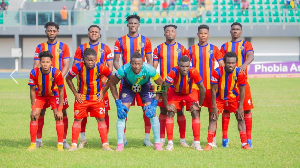By Stephen Atta Owusu
Kotoko is the Twi word for porcupine. The porcupine is an animal (a rodent) with very sharp quills and this gives it a distinctive and special appearance which is easy to identify. The quills serve a practical purpose by warding off predators. Porcupines are found in Ghana and many African countries, South-East Asia, Southern Europe, South, Central and North America. The life-span of the porcupine is approximately 15 years in their natural habitat but they can live up to 20 years in zoos. The porcupine is covered with as many as 30,000 quills. All parts of the body are covered except the stomach. The pointed ends of the quills are sharp and the porcupine is compelled to release the quills that stick in the skin of any animal that at tries to attack it. When a porcupine feels threatened by many animals at the same time, it can release about a thousand quills to drive the attackers away in much pain. Interestingly, the thousand quills that are released grow back to replace the lost ones.
In the paragraphs that follow you will know why the Ashantis call themselves Kotoko.
The Ashanti Empire existed during the 17th century in the Gold Coast, as a pre-colonial West African state. The Akan-speaking people consist of different sub-groups of which Ashanti or Asante is one. These sub-groups were composed of small chiefdoms. During the 1600s, shortly after the arrival of the Europeans, the Ashantis established their Kingdom around Kumasi. The Ashantis were mighty warriors and much stronger than their neighbours due to the active trade relations they had with the Portuguese who provided them wealth and weapons. The first Asantehene, Osei Tutu, who ruled Ashanti from 1701 to 1717, and his chief priest, Okomfo Anokye, unified the independent chiefdoms into a powerful political and military state.
The Ashanti Empire grew extensively through wars. It was the ambition of the Ashanti Empire to expand its kingdom and also to defend its domain, so from 1790 to 1896, they were engaged in perpetual warfare with their neighbours. The Ashanti Empire was weakened due to constant wars with the British, who became their arch enemies. The Ashanti king boldly declared that he would compare the Ashanti warriors to the porcupine, and that if thousand Ashanti warriors were annihilated, a thousand would rise to replace those decapitated. That is how they began to call themselves Asante Kotoko (the porcupine). Prior to the wars with the British and the empire's subsequent annexation to the Gold Coast, the Ashantis engaged in several tribal wars, defeating the Fantes and the Akyems.
The Nzimas disapproved and protested against the Ashanti Empire, calling their war against the Fantis as uncalled for. This angered the Ashantis and they decided to go and attack the Nzimas. The Nzimas were simple peasant farmers and fishermen. They had no weapons so they normally sharpened sticks to hunt animals for food and also to fight enemies who entered their territories. It is believed they derived the name Nzima from that practice: osenemaa (they sharpened sticks). When the Ashantis arrived with their guns, they found to their utmost surprise that the Nzimas were waiting to fight them with sharpened sticks. Very funny and ridiculous! If the Ashantis decided to shoot at them not a single Nzima fighter would be left. The Ashanti warriors decided to lay down their weapons and rather forge a bond of friendship between the two states. The Ashantis admired the courage and improvisation of the Nzima people. They had two gifts for them. They informed the Chief that due to their courage, they were allowed to add Kotoko to their Nzima tribe and the Chief could also use the Otumfuo title.
Did you know that the Dagombas were accorded the name Kotoko by Otumfuo Osei Tutu 1. The Dagombas were very loyal to the Ashanti king and their elders paid regular visits to the palace. It is often said that the Anwaa (Dagomba) people look like Ashantis both facially and culturally. The entire Ashanti kingdom was happy when the Dagombas began to call themselves Anwaa Kotoko. The Bandas also established special relations with the Ashanti king and the people of Ashanti. This special friendship earned them the Kotoko title. They were highly elated to be called Banda Kotoko.
Jamaica has often been described as the Kotoko of the West Indies. Jamaicans are very proud people especially of their African descent which most Jamaicans trace to the Ashanti state. Some writers honoured their ancestors in their books. Most of them bore Ghanaian names like Frimpong Manso (Jack Mansong), Nana Akua (Nanny of the Maroons), Nana Kwaku Boateng (Marcus Garvey) and many more. The author of "Languages of West Indies”, (1977), Douglas Taylor, saw many Twi inscriptions at their ancestors’ graves. He found sentences like, Nyame nfa wo nko asomdwie mu (May God take you home peacefully), w'abusua bekae wo (Your family will remember you), Nana Kwasi Bio, da yie (Nana Kwasi Bio farewell) and many more. The research he made was a way of honouring the dead and an effort to link them to the Ashanti Kingdom. His conclusion was that it was justified to call themselves Jamaica Kotoko since Jamaica and Ashanti have similar stereotypes.
Ashanti Kingdom has continued to maintain its power, riches and dignity. Those cities that use the accolade Kotoko, feel a sense of belongingness as they continue to pay homage to the Asantehene. Asante Kotoko, wokum apem a, apem beba.
Columnist: Stephen Atta Owusu
Author: Dark Faces at Crossroads
Email: stephen.owusu@email.com
Opinions of Thursday, 22 December 2016
Columnist: Owusu, Stephen Atta














